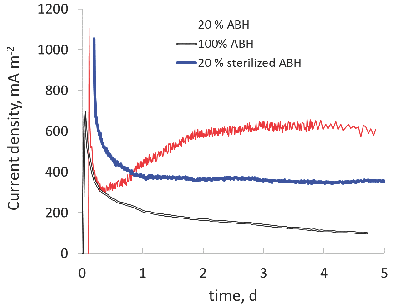 |
|
The use of biomass for alternative energy production has experienced a boom because of the low cost of raw material and the high added value of the product as far as hydrogen is concerned. Steam explosion is used as pretreatment of lignocellulosic biomass to increase the accessibility of sugars. An approach based on sustainability and development of biorefineries allows proposing the integrated use of agave bagasse pretreatment fractions to produce bio-hydrogen. In this work, hydrolysates from steam-explosion pretreated agave bagasse were used as substrate in microbial electrolysis cells (MEC). Hydrolysates were evaluated at concentrations of 20 %, 40 % and 100 % (v/v). Besides, the use of hydrolysates was compared by analyzing two inoculum sources, compost leachate and granular sludge. The highest hydrogen production was 8.5 mL L-1 d-1, which was achieved using 20 % hydrolysate, 10 % compost leachate at the anodic potential of 0.8 V/Ag/AgCl in a two-chamber microbial electrolysis cell.
Keywords: agave bagasse, hydrogen, microbial electrolysis cells, inoculum source, bioenergy.
|
|
 |

